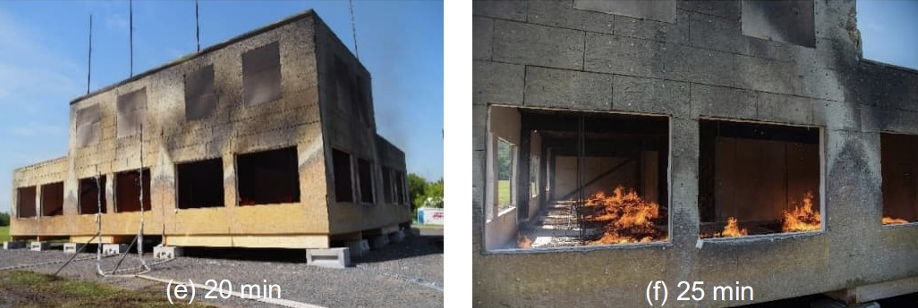Wood Burns
This fact may make the word “resilience” in today’s blog title seem a little optimistic. But time and again, real-world testing in Europe, Canada, and Australia show that in fires, large-section mass timbers maintain their design strength, thanks to how wood reacts to fire.
Fire Testing
To start, let’s look at a recent fire test conducted at the Ottawa Fire and Explosives Testing facility on June 10, 2022

The Canadian Wood Council was assisted by fire researchers at the National Research Council to conduct full-scale fire testing on a two-storey, mass timber office, with open floor plan. The final test was designed to simulate a “worst-case scenario” and was run without the intervention of sprinklers or firefighters.

The office space was arranged with wood cribbing to about 120% of a modern office fuel load. Window and door openings were left open to allow unobstructed air inflow. An “aggressive ignition package” was used to start the fire, ensuring that flames reached the ceiling as rapidly as possible.

At 10 minutes following ignition the fire is at its maximum intensity and thereafter begins to cool.

By 25 minutes, only the remains of the “office furnishings” continue to burn at a low intensity.
The fire lasted four hours, ten minutes and self-extinguished once the fuel load was exhausted. Despite the intensity of the fire, the building remained structurally sound and, following the fire, was safe to enter.
Char Saves the Day
Why did the office building in the CWC fire test not collapse? The answer is found in the way big timbers burn. As fire envelopes a big timber, it develops a surface char layer, and two effects occur – the char is much less combustible and its also a poor conductor of heat. These characteristics of char dramatically slow the transfer of heat to the interior of timbers, which in turn reduces the rate of burn and limits the amount of material available for combustion. By sizing timbers to account for the char layer, a mass timber structure can endure a “worst case” fire and still maintain structural integrity.
The dramatic photos above leave no doubt that fire is a severe threat to structures and human life. They also show that mass timber acts in a way similar to non-combustible construction. It is the contents that burn while the structure keeps its capacity for loads. In multi-storey buildings this capability allows for fire survival in cases where evacuation becomes untenable and ‘shelter in place’ is the remaining option.
Sprinklers Work
Building codes require multi-unit residential buildings of four stories or more to have automatic sprinklers. They also have hardwired smoke detectors and fire alarm control panels that notify the local fire department. Thus, the probability of a “worst-case” scenario is very low. In Europe, an engineering consulting firm Arup conducted fire tests on a large mass timber structure and found that when a low-pressure water mist suppression system was in use, it effectively extinguished the fire with only “limited discolouration” of the ceiling panels above the fire ignition point and minimal water damage.
Conclusion
While fires will always be a risk, modern mass timber design and construction dramatically improve life safety. While mass timber is extremely difficult to ignite, when it is exposed to fire, its char-forming trait will protect its load bearing capacity. When an operating sprinkler system is in use, fires will be contained within the space where they were initiated.


